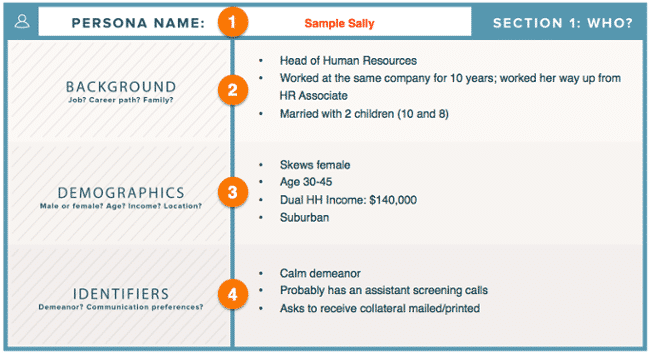Running a business involves leads and sales. It is no secret that marketing is an essential part to generate leads and sales to run a successful business. Still, many business owners and managers fail to dedicate time and resources to making a marketing plan.
A marketing plan is not only crucial in generating sales it can help build brand awareness, understand your target customers, and map out the plan to achieve these results.
Marketing plans are a fundamental part of creating and maintaining quality relationships with your customers though many business owners may overlook them.
Does this sound like you?
- I don’t have the time
- What do I include in a marketing plan?
- How do I create a marketing plan
Whatever your reason, I will show you the fundamentals on how to plan, create, and execute a marketing plan with minimal time and effort.
1. Evaluate & Assess
Without knowing where you stand, it would be difficult to determine where to start, so the first step in developing a marketing plan is to evaluate. Conduct a SWOT analysis to assess your business’ strengths, weaknesses, opportunities, and threats.
This step will give you a better understanding of your business, which will help you with further steps such as identifying your USP and competitors. Also, it helps you determine where in your business to focus your time and energy. It also gives you a “before” snapshot of your business before you build and execute your marketing plan.
Note: Over time, you will review your SWOT analysis and see progress, which in some cases as a business owner gets lost in the day-to-day activities.
2. Create a marketing template guide
A marketing template will guide you on what to include in a marketing plan. Here is some useful marketing plan template to guide to help you document all activities and actions of your plan. Record all sections and steps of your plan as you create it.
3. Establish Target Customer Personas

To have an effective marketing plan and campaign, it’s essential to define your business’ target customers/audience. Depending on your product or service offerings, you may have multiple target personas.
Create a profile for each of your target personas.
Things to include are:
- Demographic information:
- age
- gender
- yearly income
- job title
- family situation
- location
- Psychographic information:
- target persona’s values
- goals
- challenges
Gather real quotes from current customers via social media, in person, or from customer-facing team members.
Target personas will come in handy in later steps of the marketing plan.
4. Define Your Unique Selling Proposition (USP)
A well-defined Unique Selling Proposition (USP) is a keystone of a good marketing plan. Brainstorm and define what sets your product or service apart from competitors’.
In other words, why should customers choose you? What have you got that nobody else has to offer? In a crowded market space, your competitors might have a similar USP, but you must say he better and make sure all your marketing material emphasise your USP. I would recommend reading the book Blue Ocean Strategy, which will help you create uncontested market space and make the competition irrelevant.
A good competitive advantage will distinguish you from your competition and will align to complement your target personas’ values and combat their challenges.
5. Perform Competitor Analysis

If you want to beat your competition, you must first understand them. Analyse their offerings, prices, marketing strategy, and how they meet customers’ needs.
Other factors such as website, social media activity, and advertising efforts will give you helpful insight, as well as tactics that can be applied when marketing to your customers.
It is important to note that competitors may not always share all of your target personas; don’t copy their strategies exactly, instead use them as guidelines.
6. Create Marketing Goals
Goals are an essential part of a good marketing plan. Set SMART goals—goals that are specific, measurable, attainable, relevant, and timely—to ensure maximum effectiveness.
Examples of good marketing goals include:
- Gain 10% of [your industry] market share by the end of the quarter
- Generate 25 new Sales Qualified Leads before December 31st
- Sell 150 of [your product or service] this month
- Publish 3 new blog posts during the week of April 18th
- Reduce manufacturing costs by 5% this financial year
Specific goals should be customised for your organisation and should be tracked throughout their progressions.
While setting SMART goals is a good start to creating marketing goals, it is not the only required step. Determining your plan of attack—HOW you’ll meet these goals—is equally important.
Record and monitor your goals for optimal results.
7. Establish Marketing Budget
Once you’ve set your marketing goals, you then must allocate a budget to these goals. Develop a marketing budget that is tailored to your goals & strategies.
Consider the costs associated with these objectives, referring to previous experiences and revenue figures for useful information.
Your marketing budget should be continually updated to reflect changes.
Included in your marketing budget, you will need to consider if you have internal resources and capabilities to execute your strategies. Such activities as Inbound Marketing, SEO, PPC/AdWords, Social Media Engagement, etc. may need to be outsourced to a specialist who has the time, skills and experience.
8. Develop Marketing Strategies
The next part of your marketing plan is creating and executing your marketing strategies. Here is where you will start to carry out the marketing activities of your plan; the step where plans turn into reality.
The goals you have set for your organisation will dictate what strategies will be best for you. This is where the HOW from step 6 comes into play.
Some marketing strategies include:
Inbound Marketing
Attracting customers through the following inbound marketing methods:
- Blogging & Content Marketing
- Search Engine Optimisation (SEO) – read SEO Strategy Guide for 2017/18
- Email Marketing
- Pay Per Click Advertising
- Lead Magnets/Offers
- Public Relations
Social Media Marketing
Leveraging branded content, positioning products and services, communicating with customers, and offering useful updates via the following channels:
- Google+
- YouTube
Lead Management
A group of systems that target, generate, and nurture leads:
- Lead Magnets
- Useful Content
- Email Marketing
- Nurturing Process
9. Analysis & Report
The final step of building your marketing plan is analysing your results. Evaluate the performance of your marketing activities to determine which are effective marketing techniques and which are not performing.
Review your smart goals, and check if your strategies are giving you the desired results. Google Analytics is invaluable, easy to use tool for tracking marketing data and website performance.
Record these results and any other helpful findings that may be of use in the future.
What’s Next?
A marketing plan is not a set and forget, sure-fire plan for success. Just as businesses and products evolve, so should your marketing plan.
For best results, re-evaluate your marketing plan periodically and make changes as necessary.
Want more information or need help? Contact Inbound Marketing Agency today for a free marketing audit.




